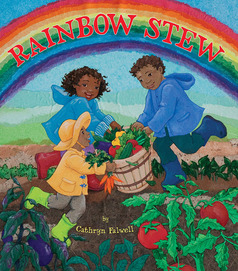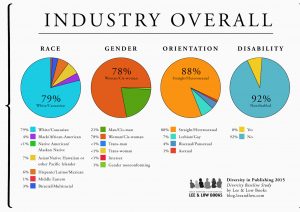World Water Day is March 22nd. It’s an internationally recognized day to celebrate water and those who labor in water, started by the United Nations in 1992. The first World Water Day was celebrated in 1993.
Explore the importance of water with these excellent titles:
Cycle of Rice, Cycle of Life by Jan Reynolds –  On the island of Bali in Southeast Asia, rice farmers follow the cycles of the water and the soil in order to plant rice.
On the island of Bali in Southeast Asia, rice farmers follow the cycles of the water and the soil in order to plant rice.
Everglades Forever, written Trish Max and photographed by Cindy Karp – Explore the Everglades, the majestic wetlands located in Florida alongside a fifth grade class.
Giving Thanks, written by Chief Jake Swamp and illustrated by Eric Printup – For as long as anyone can remember, Mohawk parents have taught their children to start each day by giving thanks to Mother Earth. The Thanksgiving Address has been adapted for children by Chief Jake Swamp.
taught their children to start each day by giving thanks to Mother Earth. The Thanksgiving Address has been adapted for children by Chief Jake Swamp.
I Know the River Loves Me/Yo sé que el río me ama by Maya Christina Gonzalez – A young girl named Maya goes to visit her friend, the river. In this gentle story, the river takes care of Maya and Maya takes care of the river.
Rainbow Stew by Cathryn Falwell – On a rainy day, three children go into their  Grandpa’s garden to pick colorful vegetables for rainbow stew.
Grandpa’s garden to pick colorful vegetables for rainbow stew.
The Woman Who Outshone the Sun/La mujer que brillaba aún más que el sol, written by Alejandro Martinez and illustrated by Fernando Olivera – In this Zapotec legend, Lucia Zenteno walks into a village in Central Mexico. Some of the villagers say that her long, dark hair blocks out the sun; others say that it outshines the sun. The frightened villagers banish Lucia and the river goes with her.
The Mangrove Tree, written by Susan L. Roth and Cindy Trumbore, illustrated by Susan L. Roth – People in the small village of Hargigo  in Eritrea were unable to grow enough food for themselves and their animals. With the help of Dr. Gordan Sato, a scientist, they plant mangrove trees and transform their impoverished village into a self-sufficient one.
in Eritrea were unable to grow enough food for themselves and their animals. With the help of Dr. Gordan Sato, a scientist, they plant mangrove trees and transform their impoverished village into a self-sufficient one.
Vanishing Cultures: Amazon Basin by Jan Reynolds – Explore the lives of the Yanomama people that live in the Amazon River Basin through the eyes of Tuwenowa and his family.
Vanishing Cultures: Frozen Land by Jan Reynolds – Explore the lives of the Inuit people through the eyes of Kenalogak, a  young girl, who helps her father with building an igloo, and goes ice fishing with here brother at night.
young girl, who helps her father with building an igloo, and goes ice fishing with here brother at night.
More Resources
World Water Day
7 End-of-year Field Trips and Book Pairings That Your Students Will Love (But Won’t Break the Bank)
Reading for the Earth: Ultimate Earth Day Resource Roundup
Book and Activity Suggestions to Match Your Summer Adventure: National and State Parks!
Book and Activity Suggestions to Match Your Summer Adventure: Beaches!


 On the island of Bali in Southeast Asia, rice farmers follow the cycles of the water and the soil in order to plant rice.
On the island of Bali in Southeast Asia, rice farmers follow the cycles of the water and the soil in order to plant rice. taught their children to start each day by giving thanks to Mother Earth. The Thanksgiving Address has been adapted for children by Chief Jake Swamp.
taught their children to start each day by giving thanks to Mother Earth. The Thanksgiving Address has been adapted for children by Chief Jake Swamp. Grandpa’s garden to pick colorful vegetables for rainbow stew.
Grandpa’s garden to pick colorful vegetables for rainbow stew. in Eritrea were unable to grow enough food for themselves and their animals. With the help of Dr. Gordan Sato, a scientist, they plant mangrove trees and transform their impoverished village into a self-sufficient one.
in Eritrea were unable to grow enough food for themselves and their animals. With the help of Dr. Gordan Sato, a scientist, they plant mangrove trees and transform their impoverished village into a self-sufficient one. young girl, who helps her father with building an igloo, and goes ice fishing with here brother at night.
young girl, who helps her father with building an igloo, and goes ice fishing with here brother at night. When asked for a list of key contacts who will support their upcoming book, many debut authors panic. “I don’t really know anyone,” they will say. But the truth is that most authors already have a large network of people at their disposal who will gladly assist in promoting their upcoming book: their friends and family. While these people probably can’t purchase a whole print run alone, a book can benefit from their support in some essential ways. Knowing the best ways to approach this group and maximize their impact is the key.
When asked for a list of key contacts who will support their upcoming book, many debut authors panic. “I don’t really know anyone,” they will say. But the truth is that most authors already have a large network of people at their disposal who will gladly assist in promoting their upcoming book: their friends and family. While these people probably can’t purchase a whole print run alone, a book can benefit from their support in some essential ways. Knowing the best ways to approach this group and maximize their impact is the key. 